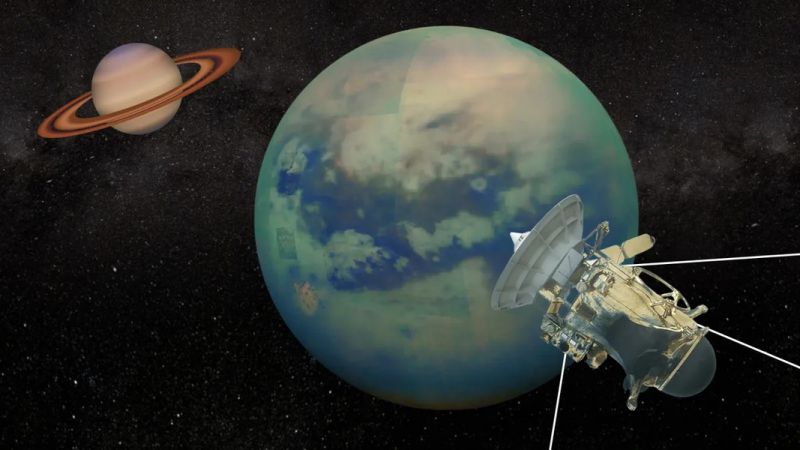
In early 2023, a new comet took stargazers by surprise. Called Comet C/2023 A3 (Tsuchinan-Atlas), this icy visitor was discovered by two separate observatories in South Africa and China. Hailing from the distant Oort Cloud, Comet A3 had scientists and amateurs alike wondering if it would be the next naked eye comet to light our skies, but it was still too early to tell last year. As 2024 unfolds, we eagerly anticipate whether Comet A3 will deliver the breathtaking celestial display we have all been hoping for!
Now between the orbits of Mars and Jupiter, Comet A3 is making its way towards the central solar system. It’s set to make its closest approach to the Sun – called perihelion – on September 27, when it will graze less than half an Earth-Sun distance by our star. Shortly after on October 12, it will make its nearest flyby to our planet, which astronomers call perigee. Scientists with the Unistellar Network and worldwide have been hard at work predicting how bright the comet will be come time for its flybys, but it remains difficult without knowing the comet’s makeup or if it will outburst as ices sublimate. But that’s where you come in!

The orbit of Comet A3 and its current position. Credit: theskylive.com
A Year of Comet A3
The Unistellar Network has been observing Comet A3 for an entire year now, studying its brightness to help astronomers better understand its activity. Original Unistellar models created by Cometary Activity program lead Dr. Ariel Graykowski showed that the comet is expected to become as bright as our North Star this fall, reaching naked-eye status. Nearly 80 observers have contributed data on this solar-system object since it became visible! But surprisingly, those data now show that Comet A3 just went through a period of dimming and is now brightening again, contrary to what astronomers expected.
Scientists now believe that this dimming could have been due to the comet’s phase angle – the angle between the Sun and the observer as seen from the comet, which influences how the comet’s tail and coma appear from Earth. The phase angle has began increasing in mid-April, which causes light from the Sun that is reflected off the comet and towards Earth to be less direct, hence the dimming. This could certainly affect the comet’s appearance, even when we expect it to brighter as it approaches the Sun and Earth. Now scientists know that the phase angle has started to decrease again recently, so the comet should be getting brighter as reflected in UNISTELLAR observations – but Comet A3 is also nearing the Sun, which would produce the same brightening effect! Comets have so many interesting dynamics that it is hard to tell just what these space rocks are doing.
Other scenarios could be reponsible for the apparent dip we saw, like fragmentation. Of course astronomers and skywatchers alike would love to see this comet survive its close approach to the Sun and put on a heavenly show! But it could be breaking apart slowly (instead of all at once in a sudden bright outburst, like we see from some comets). This gradual breakup could have caused the dimming, or A3 could have also used up all of its volatiles already — the ices that turn straight to gas as the comet nears the warm Sun. These volatiles create the comet’s bright coma, but if they’ve already been depleted, we may not see the grand show we have been hoping for come this Winter.
All of these mechanisms could contribute to the decline in brightness that we see, or entirely different ones! None of these alone can quite explain the dimming trend, nor the increase in brightness we have seen recently. In the plots below, you can see several models that Graykowksi has used to test each theory. The white model shows how the UNISTELLAR data was predicting the comet to brighten before the dip occured. If we consider all of the data that observers have gathered, not just those before the dimming, we get the orange curve, which is clearly a poor representation to reality! If we take the data used to create the white curve, but also consider the phase angle mentioned above, the red curve should predict Comet A3’s brightness. But none of these scientific models seems to match the data! That means that something else must be going on, and astronomers need more data from observers like you to study Comet A3’s behavior.


Nearly 80 Unistellar Network citizen scientists have been watching Comet A3 over the last year. The entire light curve (top) is shown with brightness models shown in white, orange, and pink. The zoomed-in plot below shows how recent observations have followed or diverged from these models.
Coming to Skies Near You this Fall
Although the real show would begin near perihelion and perigee, we’ll lose sight of this comet during the summer months leading up to these events. Comet A3 will be visible to both the Northern and Southern hemispheres in evening skies through mid July, but it will then fade from sight as it travels towards the Sun. That’s why observations of this comet are more important now than ever!
By the time of Comet A3’s close approaches, it will be a challenge to observe – which is all the more reason to turn your telescopes towards it as soon as you can. In a short window between perihelion and perigee, from September 27 to October 2, we’ll be able to see this comet in the early morning skies of both hemispheres. It will pop back up in the evening skies shortly after perigee and through early November.

Comet C/2023 A3, captured on May 4th 2024 by Masao S. (Japan) with his EVSCOPE2.
Despite the challenges, turning your telescopes towards Comet A3 now and later this year will be well worth it – if you watch for A3 between perihelion and Nov 1 (when the comet is between the distance of Earth and the Sun), you may see the effects of forward scattering! Forward scattering occurs when sunlight coming from behind the comet, with respect to Earth, is scattered off of dust particles in the comet’s coma and towards our eyes. This can cause significant brightening and stunning views, as was seen with Comet McNaught in 2007. For instance, Comet McNaught was originally predicted to have a brightness of -1 magnitude, similar to the brightest star in our skies, Sirius. However, forward scattering caused McNaught to appear 100 times brighter! A similar effect may be in store for A3, so keep your eyes on the night sky through July and then again this autumn.
Observe Comet A3 with your Unistellar Telescope
Want to contribute images and scientific data on this space snowball? This comet is in the Unistellar App Catalog, so it is easy to observe! Simply search C/2023 A3 in your App and click GoTo to visit this comet, currently more than 265 million km (about 165 million miles) away but getting closer.
To make a Science observation, visit the Comets Tutorial Page and follow the Observation section instructions for 1A: The target is in the Unistellar app’s database.
In the Recording field be sure the following information is entered:
Record duration : 20min<
Exposure time : 3971ms
Gain : 25db
When you are done, don’t forget to submit a Comet Observation Report. Happy Comet Watching!





